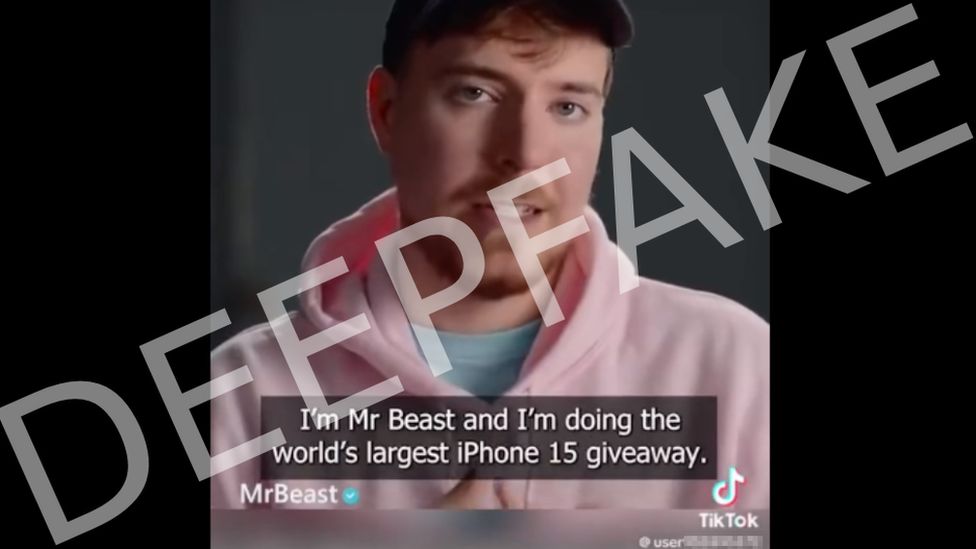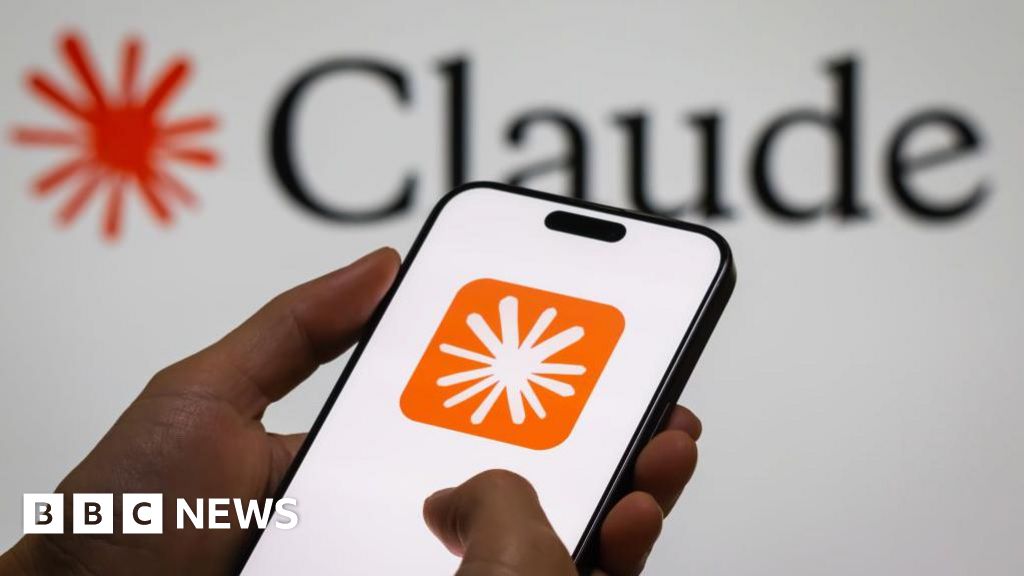ARTICLE AD BOX

A video of MrBeast "giving away" iPhones has been exposed as a deepfake
By Tom Gerken
Technology reporter
The world's biggest YouTuber, MrBeast, and two BBC presenters have been used in deepfake videos to scam unsuspecting people online.
Deepfakes use artificial intelligence (AI) to make a video of someone by manipulating their face or body.
One such video appeared on TikTok this week, claiming to be MrBeast offering people new iPhones for $2 (£1.65).
Meanwhile, likenesses of BBC stars Matthew Amroliwala and Sally Bundock were used to promote a known scam.
The video on Facebook showed the journalists "introducing" Elon Musk, the billionaire owner of X, the social media site formerly known as Twitter, purportedly promoting an investment opportunity.
Similar historical videos have claimed to show him giving away money and cryptocurrency.
The BBC has approached Facebook-owner Meta, which has not yet removed the content.
Instead, the videos are gated by an image warning to would-be viewers that they contain false information checked by independent fact-checkers FullFact, which first reported the issue.
Meanwhile, a TikTok spokesperson said the company removed the MrBeast ad within a few hours of it being uploaded, and the account which posted it has been removed for violating its policies.
This Twitter post cannot be displayed in your browser. Please enable Javascript or try a different browser.View original content on Twitter
The BBC is not responsible for the content of external sites.
TikTok specifically bars "synthetic media" which "contains the likeness (visual or audio) of a real person".
In a post on X viewed more than 28 million times, the YouTuber shared the fake video and asked if social media platforms were ready to handle the rise of these deepfakes.
How to spot a deepfake video
There have been a series of high profile deepfakes in recent weeks, with Tom Hanks warning on Monday that an advert appearing to be fronted by him shilling a dental plan was not real.
As AI systems have grown in power and sophistication, so have concerns about their ability to create ever more realistic virtual versions of real people.
Watch: The BBC's James Clayton puts a deepfake video detector to the test
Generally speaking, the first clue that a video may not be what it seems is simply that it's offering something for nothing.
But the MrBeast video complicates this.
The YouTuber has made his name giving away cars, houses and cash - he even gave trick or treaters iPhones last year in Halloween - so it's easy to see how people might believe he was gifting these devices online.
But eagle-eyed viewers, and listeners, will be able to spot the tell tale signs that something is amiss.
The scammers have attempted to look legitimate by embedding in the video MrBeast's name in the bottom-left corner, as well as the blue verification mark used on many different social media platforms.
But TikTok videos automatically embed the actual name of the uploader underneath the TikTok logo itself.
The account that posted the video is not verified, and now no longer exists.
Meanwhile, in the videos featuring BBC presenters, the errors are more pronounced.
For example, in the Sally Bundock video, the "presenter" mispronounces 15 as "fife-teen", as well as oddly pronouncing project as "pro-ject".
She also says "more than $3bn 'were' invested in the new project", rather than "was invested".
These errors may be small, but as the technology advances and visual clues become less apparent, verbal errors - much like the spelling errors you often find in a scam email - can be a useful way to identify if something is fake.
The fakers have used a legitimate video of Sally Bundock presenting - at the time talking about Mr Musk taking over X - but making it seem like she's talking about an investment opportunity involving him.
In the Matthew Amroliwana video, there are some similar audio cues, with garbled sounds at the start of certain sentences.
There are plenty of indicators in this video that things aren't all they seem. The text is different to that used by BBC News, with spelling errors and odd phrasing.
But there is at least one tell tale visual error - where "Elon Musk" appears to have an eye on top of his left eye.
This type of glitch is common with deepfakes, and happens due to an issue with the technology.
But if you're ever unsure if a video is real or not, there is one golden rule to follow - unless MrBeast or Elon Musk is stood in front of you in real life, there's no such thing as a free iPhone.

 1 year ago
36
1 year ago
36








 English (US) ·
English (US) ·